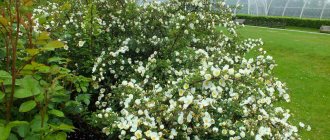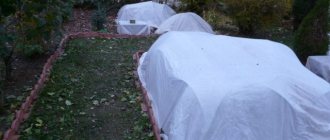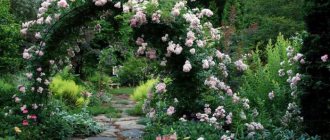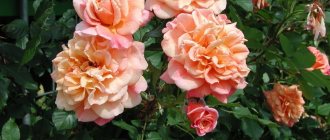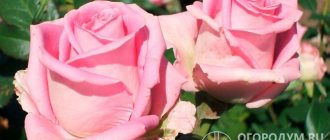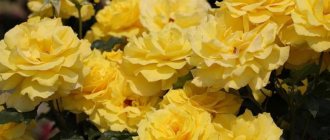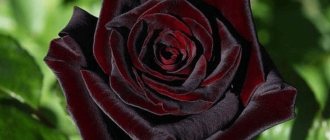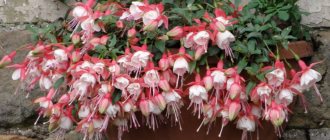Winter hardiness is a very important criterion for choosing rose varieties. It is especially important for flower growers who live and are forced to grow ornamental flowering plants in regions with a harsh climate. Explorer series varieties have excellent frost resistance. Let's take a closer look at its bright representative - the Martin Frobisher variety.
History of origin
This plant was the first of the series mentioned above to be bred in North America. Specialists from the Ministry of Agriculture of Canada worked on varieties of this group. All crops representing the Explorer series are super frost-resistant. But, without exaggeration, our heroine is considered the best.
The author of the rose is the breeder Dr. Felicitas Svejda. The year of appearance of the Martin Frobisher variety is 1962. Testing of the variety began in 1968. They took place in the Canadian capital of Ottawa, as well as in other areas of the North American state and in the northern States. As a result of observations, some dying of the tops of the rose bush stems was revealed. However, this drawback can be easily eliminated thanks to pruning.
The variety was named after the famous British traveler who lived in the 16th century. Instead of the luxurious, sunny East, to the shores of which Martin Frobisher dreamed of landing, the navigator opened the way to the vastness of the cold, inhospitable Arctic. Considering the extremely high winter hardiness of the plant, this name suits the beautiful flower perfectly. It is interesting that the Explorer series is otherwise called “Explorer Roses”, since absolutely all of its representatives bear the names of famous travelers of the past.
Category: “Questions and answers”
Question No. 1.
What variety can replace “Martin”?
Hybrids bred on the basis of the Rugosa rose are distinguished by high winter hardiness:
- "Blanc Double de Coubert", Cochet-Cochet France, 1892,
- " Hansa " , Schaum&Van Tol, 1905,
- " Jens Munk ", Svejda Canada, 1964,
- "John Davis" , Svejda, 1986,
- "Scabrosa ", Harkness, UK, 1950.
These and many other varieties are able to withstand frosts above minus 350, without shelter, in an upright position, while the shoots do not freeze, even in colder winters.
Question No. 2.
What is better to plant next to a rose?
The delicate color of the Martin rose should not be suppressed by too bright flowers. You should not place red, purple and orange plants next to it. With such proximity, pale pink rose petals lose their charm.
Description
It is difficult to say which category the overseas beauty belongs to. According to the international classification, it belongs to the Rugosa hybrids. If we talk about the nature of the application, the plant can be cultivated as a park and climbing rose, as well as a scrub. However, taking into account the botanical features, the culture is still a park culture.
The appearance of Martin Frobisher is gentle and attractive. The first thing that catches your eye when contemplating this plant is the small double flowers, 5-6 cm in diameter, pale pink in color, close to ivory, white along the edges and at the base of the silky petals. They impart elegance and aristocratic features to the noble culture, including due to their persistent aroma of medium intensity, in which the pronounced scent of rose oil can be discerned. Flowers are formed on the perennial in racemose inflorescences of 3-5 pieces. Each of them is formed from 40 petals and does not last long on the plant. Nevertheless, the rose stands strewn with flowers throughout the entire season, since there is practically no break between the withering of the old ones and the appearance of new inflorescences.
Like all park varieties, Martin Frobisher is a powerful, vigorous bush. Its height varies from 1.5 to 2.0 meters. The perennial grows no more than 120 cm in width. Young erect shoots of the plant are covered with reddish-brown bark. In adult culture they are tough and durable. The advantage of the variety is the absence of thorns on the stems. The perennial leaves are dense, juicy green, oblong in shape. The veins are clearly visible on their outer surface. The plant blooms profusely and lasts until the first autumn frosts.
In addition to high frost resistance, which allows the ornamental shrub to winter quietly without shelter when the air temperature drops to -45ºC, the Canadian queen of flowers has good immunity to powdery mildew, and average resistance to black spot and rain. The shoots of the plant are strong, which is why they do not bend during lush flowering.
Characteristics and features of the variety
Martin Frobisher, a rose called Martin for simplicity, blooms with pale pink flowers, on the reverse side the petal is completely white, which gives the rose a special grace and uniqueness. Closer to the center, the intensity of the pink color intensifies. The diameter of the flowers is 5-6 cm, they appear in clusters of 3-5 pieces, the number of petals is about 40. Roses have a delicate aroma of rose oil, which can be felt from a distance. Each flower does not live long, but new ones immediately appear to replace those that have faded, so the bush is constantly decorated with flowers.
Rose Martin Frobisher
Rose Poetry
This is a park variety with a bush height of up to 1.75 m and a width of up to 1 m. With such dimensions, the bushes look proportionate and harmonious. The bark on young shoots has a reddish tint, there are no thorns, the foliage is bright green and dense.
Important! Flowering is practically uninterrupted until the onset of frost; the bush can grow in partial shade. Despite its frost resistance, the variety grows well in hot climates. The flower stems are erect and suitable for cutting.
Park canadian roses look great as hedges; they can be used to decorate garden gazebos, gate arches and living figures.
Growing and care
The creation of North American breeders is unpretentious. This makes it possible to grow Martin Frobisher even for novice gardeners who have no experience in growing roses. The place for the shrub should be slightly shaded or moderately sunny. It would be good if tall trees with a sparse crown grew nearby, making the light passing through it diffuse. Lowlands and extremely open spaces are not suitable for placing the Martin Frobisher variety.
The flower grows well in fertile loamy and sandy soils. Although you can use any soil for cultivating perennials, as long as it is loose, light, and slightly acidic. Plant the crop in a hole to a depth of at least half a meter. The root collar is buried 5 cm below the ground level. Ornamental shrubs need regular, abundant watering with warm, settled water; periodic fertilizing with nitrogen and mineral fertilizers. Loosening the soil under the flower and mulching the tree trunk area are also important for the health of roses.
In the spring, dry and frozen shoots, as well as their tops, are pruned. Strong stems are shortened to the 8th bud. In summer, it is necessary to regularly remove faded buds from the bush to maintain the attractive appearance of the plant and stimulate the appearance of new flowers. In the process of autumn pruning, the green parts of the branches, diseased and too weak shoots are removed. In the 6-7th year of life, it would be a good idea to rejuvenate the rose bush by pruning it to the ground. For the winter, the crop is covered with dry garden soil and sprinkled with peat on top.
Reviews from gardeners about growing Martin roses in different climatic conditions
- Tatyana Aleksandrovna, (Belgorod, zone 5).
The rose was planted four years ago, in the fall. The first year I hilled it up for the winter, it withstood the frosts well. In the summer of next year it grew up to a meter and immediately bloomed. It’s a pity that the flowers didn’t last long and quickly flew away. There were always pink and white petals lying on the path, like snow. For two years in a row I didn’t cover it with anything for the winter, and last winter the bush froze. I cut all the branches down to the stump, and in the spring one stem appeared and bloomed in the summer, but with different flowers. Now I regret that I didn’t cover the rose.
- Svetlana Anatolievna, (Moscow region, zone 4).
The rose is good for everyone, it blooms beautifully, smells nice, and overwinters without shelter. But as they say: “Nothing is perfect.” As soon as May comes, the bush is attacked by various kinds of caterpillars. Other roses do not suffer this way. Last spring, the pests ate all the leaves, only the stems remained, and they didn’t get to the flowers. So you have to constantly douse the rose with chemicals.
- Elena Olegovna Khabarovsk 3 Zone
For the first time in my life I saw flowers rotting on a bush before they had time to bloom. This happened to my rose “Martin” last summer when heavy rains began. There were a lot of buds, but they could not open completely. They turned brown from moisture and hung on their eyelids like rags. And the stems bent, like a climbing rose, although the description says that they should be erect.
Use Cases
Martin Frobisher is used for single and group plantings on the lawn. This is an ideal option for decorating a gazebo and decorating a hedge. The plant is suitable for dividing the garden into zones. It goes well with other varieties of Canadian roses, including those from the Explorer series, as well as with other ornamental flowering annuals and perennials, and conifers. The lovely flowers of the Canadian beauty Martin Frobisher are often used as cut flowers, since in water they retain their impeccable appearance and freshness for a long time.
History of creation
All varieties in this series are named after famous sailors. The traveler Martin Flobischer lived in the 16th century and, dreaming of discovering the warm eastern lands, ended up on the harsh shores of North America, where Canada is now located.
In the middle of the 20th century, Canadian breeders under the leadership of Felicia Sveida began breeding hybrids adapted for growing them in places with cold winters. There are already more than 20 varieties in the Explorer series; the Martin Frobisher rose was the very first to be bred.
The selection of this variety was completed in 1962, the desired result - excellent tolerance to frosty winters - was achieved.
Advantages and disadvantages of the variety
Advantages and disadvantages of the Martin variety
Rosa Fisherman friend
The advantages of the Martin variety include:
- High winter hardiness. This quality allows roses to be grown in the conditions of the Leningrad region and other northern regions of the country.
- The proportional shape of the bush allows it to be grown as a scrub.
- Continuous flowering throughout the summer season makes the variety especially attractive to gardeners.
- The absence of thorns on young shoots is a valuable quality when creating bouquets.
- Easily tolerates short-term drought.
- Responds well to watering and fertilizing.
Disadvantages include poor resistance to pest attacks, so preventive spraying with insecticides is necessary.
In strong sun, flowers may fall off in one day, and in dense shade there is a chance that the rose will not bloom at all.
During prolonged rainy periods, the roses do not open, the buds darken and rot.
Thanks to their unpretentiousness and frost resistance, Martin rose bushes grow quickly and create the basis for compositions with other varieties. Where winters are not too severe, these roses offer no cover at all, making them ideal for hedges and arbors. Gardeners like the variety because it does not create much trouble.
0 0 votes
Article rating
Agrotechnics of cultivation
Like all varieties of the Explorer series, the Canadian park rose Martin Frobisher is quite unpretentious in care. It can be planted in both sunny and partial shade. The hole for planting is dug to a depth of 0.5-0.6 m, a square with a side size of 0.9 m. The root collar should be buried 5 cm below ground level so that rosehip shoots do not sprout on the rootstock. The soil should have a slightly acidic reaction; when planting, humus, ash and sand are added to the soil.
Rose Hello
The roots go deep, so you will need a lot of water for irrigation. It is necessary to water in hot weather at least twice a week. If humus and mineral fertilizers were added during planting, then the rose does not need fertilizing at first. In the future, fertilizers are applied every 20 days, in the spring it is nitrogen fertilizers, and during flowering - potassium-phosphorus fertilizers.
Attention! 2 months before the onset of frost, fertilizing should be stopped so as not to cause increased growth of young shoots that will not tolerate the cold.
Martin Flobischer roses require regular pruning. Description of scraps:
- Spring involves removing all frozen and dried branches. Only 5-6 strong shoots are left, which should be shortened to the seventh or eighth bud.
- In summer, faded buds are removed to make the bush look attractive. Shoots that do not produce buds are also cut out so that they do not interfere with the growth of full-fledged branches.
- Autumn pruning involves removing the green parts of the shoots, and cutting out weak and diseased branches completely.
- 6-7 years after planting, the rose bush is rejuvenated. To do this, all shoots must be cut to the ground. In their place, new young shoots will grow, capable of producing many flowers.
Frost-resistant varieties of roses rarely get sick, but severe weather conditions sometimes still lead to the appearance of gray rot, which manifests itself in the form of mold on the buds. The affected buds must be removed, and the bush should be sprinkled with an infusion of onion peels.
Spraying with copper preparations Topaz or Forecast will help get rid of powdery mildew. To prevent the rose from becoming infected with black spot, it should be planted away from other plants that are prone to this disease.
Important! To prevent pest damage, the bush is sprayed with Karate, Fufanon, and Komandor.
To protect the bush from weeds, mulching is used. This procedure, in addition to controlling weeds, will preserve moisture and eliminate such labor-intensive techniques as loosening and weeding. It is important to choose the right mulching material. You should not use fallen leaves or pruning products from the roses themselves, as they may contain sources of disease. Too thick a layer of mulch will also lead to waterlogging and can cause infection.
Mulching roses
A suitable material for mulching roses is tree bark. It does not interfere with the passage of water and air, and the soil underneath does not overheat. Crushed bark is not blown away by the wind and is very decorative, especially if painted in soft colors.
Attention! When purchasing dyed bark, you should make sure that the dye is non-toxic.
Before winter, rose bushes are pruned, the shoots are bent to the ground with slingshots and the bush is covered with a small layer of compost soil. When hilling, you should not take the soil around the trunk, this will lead to exposure of the roots and death of the bush from frost.
When snow falls, you can additionally throw it on the bush. If there is frost without snow, then the bush is insulated with spruce branches, dry grass and other similar insulation materials.
Having purchased one Martin Flobischer rose seedling, you can later get new plants from it by propagating the bush using cuttings. To do this, a one-year-old shoot 25 cm long is cut off, all leaves except the top two are removed. The branch is buried in the ground up to these leaves, watered and covered with a plastic bottle. For the winter, the bottle is covered with earth. In the spring, the soil is removed and the cap is screwed off the bottle. When it gets warmer and green buds appear on the shoot, remove the bottle. In one season, the cutting turns into a full-fledged young plant.

